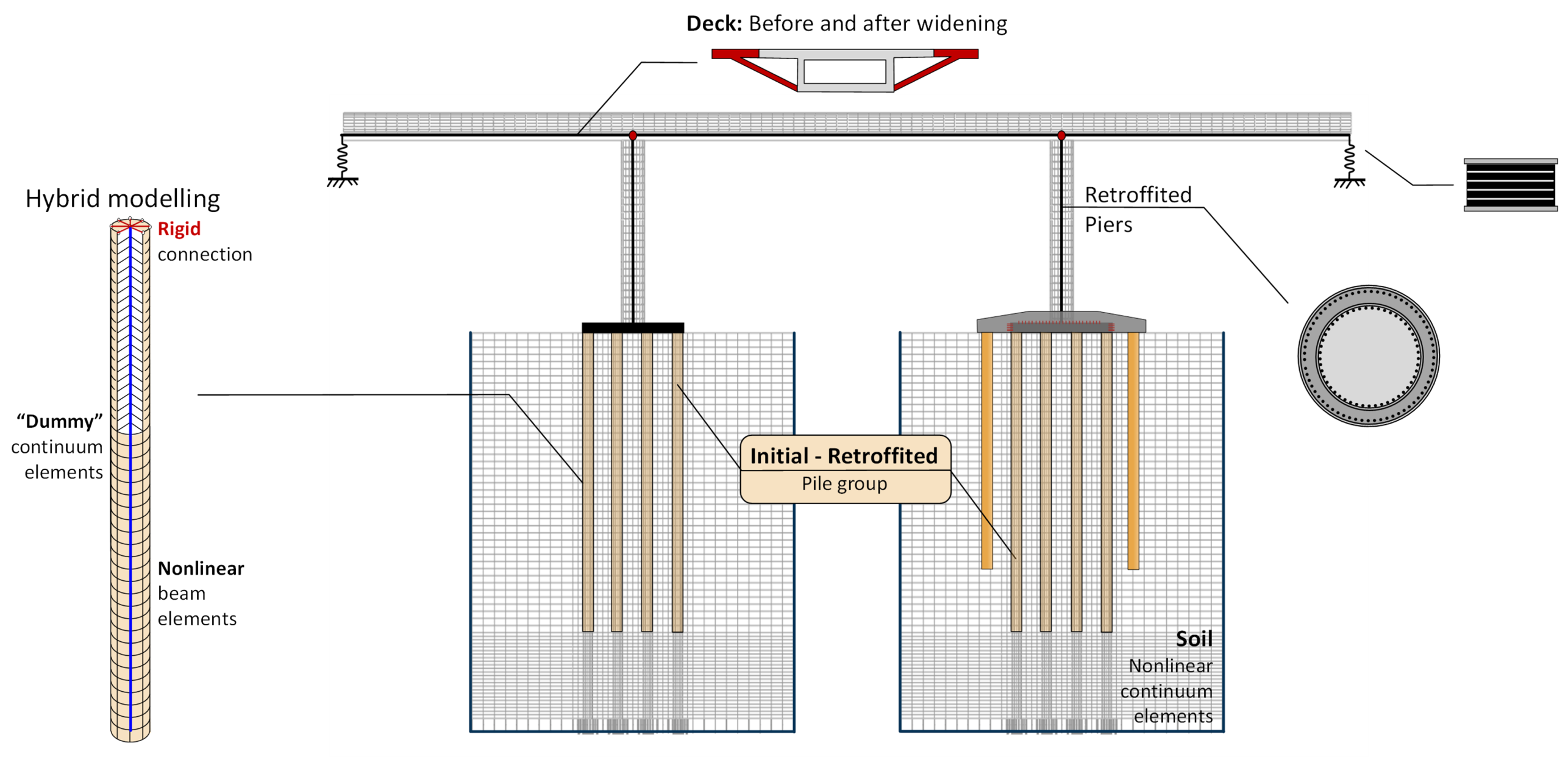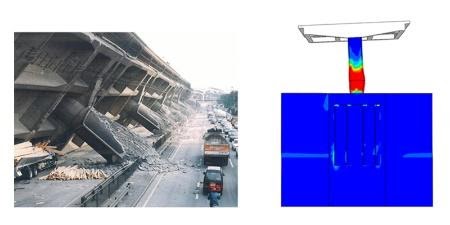Sustainable Retrofit of Bridge Pilegroups
Traffic disturbances and delays caused by the steady increase of mobility volumes affect the performance, safety, and sustainability of infrastructure, calling for retrofit and extension projects. The Swiss Federal Council emphasized the significance of such projects by approving in 2018 CHF 14.8 Bio. for national road extension works until 2030. In this context, the capacity of bottleneck areas needs to be increased, rendering the retrofit and widening of existing bridges of paramount importance. While bridge pier retrofit is relatively straightforward, foundation strengthening can be challenging, costly, and time–consuming. This is especially true for pile groups, which are commonly used for bridges.
In Switzerland (and worldwide), the vast majority (over 90%) of existing bridges were built before the 90’s, without any or just “basic” seismic design. This renders seismic loading a critical element of retrofit design. Incomplete understanding of dynamic soil–structure interaction (SSI) often leads to over-conservative pilegroup design, prohibiting full mobilization of their capacity. Allowing strongly nonlinear pilegroup response may substantially reduce the required interventions, also offering the potential of improved seismic performance. This may allow optimization of retrofit design, taking advantage of the benefits of controlled nonlinear response and of the associated energy dissipation mechanisms.
Supported by the Swiss Federal Road Office (ASTRA) and later on by the Swiss National Science Foundation (SNF), we have been investigating the retrofit of existing bridges on pilegroups, combining numerical and centrifuge modelling. After compiling a thorough database of existing bridges in Switzerland, we have been analysing the seismic response of representative examples, comparatively assessing the current practice of “elastic” foundation design, to an alternative design approach that allows nonlinear foundation response (external page J87). Inspired by the widening of an existing Swiss bridge, we have employed 3D FE modelling to compare the widened bridge with retrofitted vs. un-retrofitted foundation. The un-retrofitted foundation reduces structural damage by dissipating energy through soil yielding, at the cost of slightly increased, but totally tolerable settlements. By revisiting the notorious collapse of the elevated Route No. 3 of Hanshin Expressway during the 1995 Kobe earthquake (external page J102), we verified the degree of realism of our analysis techniques, and especially the modelling of reinforced concrete (RC) members (pier and piles) using the Concrete Damaged Plasticity (CDP) model.

Using our drum centrifuge, we have been conducting a series of experiments modelling bored and driven piles subjected to axial loading, and representative pilegroups subjected to combined moment-shear loading. Using the centrifuge results as benchmark, we have validated our nonlinear 3D FE models, which are subsequently used for parametric studies. An essential prerequisite for application of such methods in practice is the realistic evaluation of the actual stiffness and capacity of existing pile groups. In this context, we are currently developing a simplified stiffness estimation technique, based on in-situ measurements of the lateral vibration response of bridge pier-foundation systems to controlled non-destructive dynamic loading. After an initial numerical study, centrifuge testing is conducted in our drum centrifuge using a novel dynamic mass vibrator.

Selected recent publications

Sakellariadis, L., Marin, A., & Anastasopoulos, I. (2019). Widening of Existing Motorway Bridges: Pile Group Retrofit versus Nonlinear Pile–Soil Response. Journal of Geotechnical and Geoenvironmental Engineering, 145(12), (external page J87)

Sakellariadis, L., Anastasopoulos, I., & Gazetas, G. (2020). Fukae bridge collapse (Kobe 1995) revisited: New insights. Soils and Foundations, 60(6), 1450-1467. (external page J102)